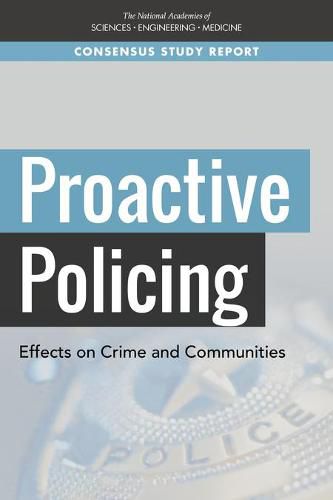Readings Newsletter
Become a Readings Member to make your shopping experience even easier.
Sign in or sign up for free!
You’re not far away from qualifying for FREE standard shipping within Australia
You’ve qualified for FREE standard shipping within Australia
The cart is loading…






Proactive policing, as a strategic approach used by police agencies to prevent crime, is a relatively new phenomenon in the United States. It developed from a crisis in confidence in policing that began to emerge in the 1960s because of social unrest, rising crime rates, and growing skepticism regarding the effectiveness of standard approaches to policing. In response, beginning in the 1980s and 1990s, innovative police practices and policies that took a more proactive approach began to develop. This report uses the term proactive policing to refer to all policing strategies that have as one of their goals the prevention or reduction of crime and disorder and that are not reactive in terms of focusing primarily on uncovering ongoing crime or on investigating or responding to crimes once they have occurred.
Proactive policing is distinguished from the everyday decisions of police officers to be proactive in specific situations and instead refers to a strategic decision by police agencies to use proactive police responses in a programmatic way to reduce crime. Today, proactive policing strategies are used widely in the United States. They are not isolated programs used by a select group of agencies but rather a set of ideas that have spread across the landscape of policing.
Proactive Policing reviews the evidence and discusses the data and methodological gaps on: (1) the effects of different forms of proactive policing on crime; (2) whether they are applied in a discriminatory manner; (3) whether they are being used in a legal fashion; and (4) community reaction. This report offers a comprehensive evaluation of proactive policing that includes not only its crime prevention impacts but also its broader implications for justice and U.S. communities.
$9.00 standard shipping within Australia
FREE standard shipping within Australia for orders over $100.00
Express & International shipping calculated at checkout
Proactive policing, as a strategic approach used by police agencies to prevent crime, is a relatively new phenomenon in the United States. It developed from a crisis in confidence in policing that began to emerge in the 1960s because of social unrest, rising crime rates, and growing skepticism regarding the effectiveness of standard approaches to policing. In response, beginning in the 1980s and 1990s, innovative police practices and policies that took a more proactive approach began to develop. This report uses the term proactive policing to refer to all policing strategies that have as one of their goals the prevention or reduction of crime and disorder and that are not reactive in terms of focusing primarily on uncovering ongoing crime or on investigating or responding to crimes once they have occurred.
Proactive policing is distinguished from the everyday decisions of police officers to be proactive in specific situations and instead refers to a strategic decision by police agencies to use proactive police responses in a programmatic way to reduce crime. Today, proactive policing strategies are used widely in the United States. They are not isolated programs used by a select group of agencies but rather a set of ideas that have spread across the landscape of policing.
Proactive Policing reviews the evidence and discusses the data and methodological gaps on: (1) the effects of different forms of proactive policing on crime; (2) whether they are applied in a discriminatory manner; (3) whether they are being used in a legal fashion; and (4) community reaction. This report offers a comprehensive evaluation of proactive policing that includes not only its crime prevention impacts but also its broader implications for justice and U.S. communities.